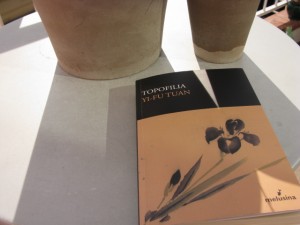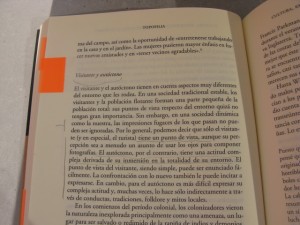

visitor and native.The visitor and the native takes into account many different aspects of the environment around them. In a traditional stable society , visitors and the foating population are a small part of the total population: their views on the environment may not have great importance. However, in a dynamic society such as ours, fleeting impressions of those who pass can not be ignored. Usually we say that only the visitor (and especially the tourist) has a point of view, although their perception is often a matter of using his eyes to compose pictures. The native, by contrast, has a complex attitude derived from the total immersion environment. The visitor’s standpoint, being simple, can be set easily. The confrontation with the new can also induce expression. But for the indigenous is more difficult to expresshis complex attitude and often does so only indirectly through behaviors, traditions, folklore and local myths.
…I’ve been spending some time reading and listening to people trying to share thoughts, think structures, constructions to shelter meaning…
Around 1960, Yi-Fu Tuan invented a word to represent or to name the attachment to a place: TOPOPHILIA.
I don’t know if we can still take this labor-thought effort and use it to cover our current reality…
After the disappointment of tourism taken as one of the fine arts, and the global blowing up the idea of distance into thousand digital pieces, who can still strictly say that his/her identity feeds on the condition of belonging to a land-place without carrying in his/her pockets sand from foreign landscapes?
Those crossing borders, where they keep the magic amulet giving the unexplored place under their feets the quality of being a passable place?
Or then, those crossing borders they lose this need to belong to the place where they are?


